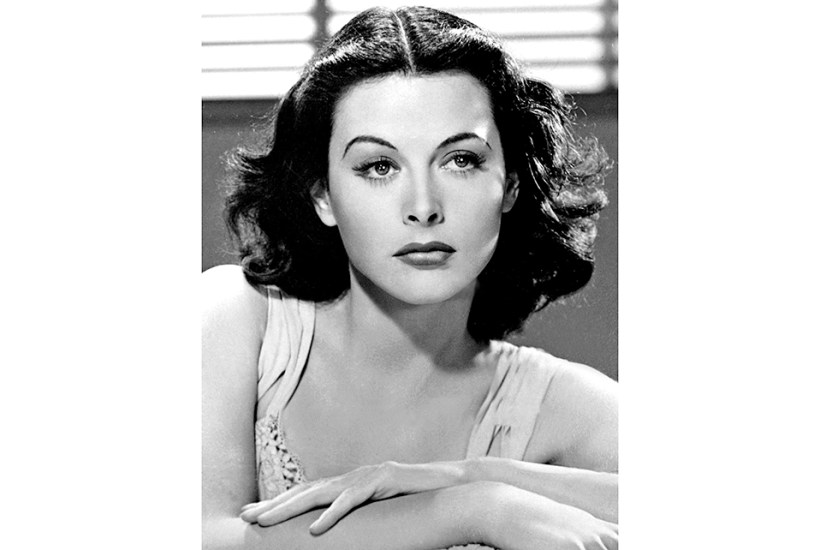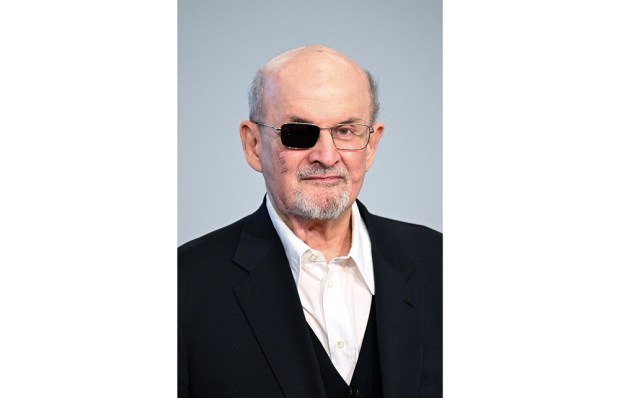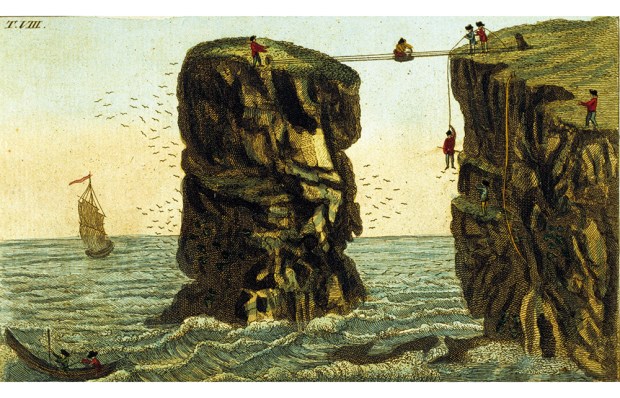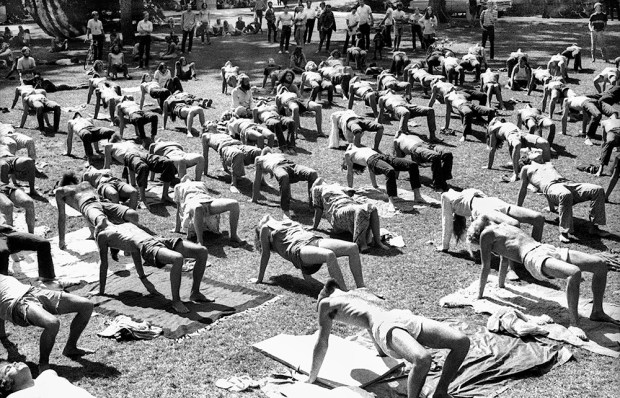Despite being known as a visually driven town, Hollywood has a rich oral history. This may be due to the fact that it is (like most literary communities) a small, gossipy village in which everybody knows everybody else and what everybody is saying about them. It also testifies to the fact that while Hollywood’s ‘players’ may often produce stupid films, they aren’t actually stupid themselves. Most of the time they know exactly what they’re doing – which is what makes them so perplexing.
According to this hefty book, which assembles more than half a century’s worth of interviews conducted by the American Film Institute, Hollywood’s early days weren’t as glamorous as the later ones, but they certainly seemed a lot more fun. As Henry Hathaway recalled of the early 20th century, after Carl Laemmle established Universal Studios in the San Fernando Valley, the industry attracted bright, restless people who had trouble keeping their jobs:
They were the kind of people who didn’t give a damn if they were broke one day and they drank a lot. They always needed money. They were always broke. No matter what they made, they spent it. That was sort of the demeanour of everybody in the business: spent every goddamn thing they made.
The industry was soon producing streams of movies to feed an ever-increasing consumer hunger, and competence was regarded more highly than artistry. The more movies Hollywood produced, the more money it made – whether the movies were good or not.
Those who grew up with the industry were intelligent, adaptable, adventurous and, according to the great early silent film actress Gertrude Astor, well-fuelled with cheap alcohol, even during Prohibition:
Everybody was stewed up on hard cider… they used to keep it in jugs in their dressing rooms. I had a jug of it to give everybody. Hoot Gibson [the star of popular early westerns] had one. He used to get tight a little bit, and then he would sit there with his jug up on his shoulder drinking hard cider and go to sleep with it there in his dressing room.
As Tay Garnett, one of Mack Sennett’s most prolific screenwriters, recalled: ‘I don’t think it ever occurred to anybody that the movies would ever be a business.’ Hollywood seemed more like a place where you could earn good money even if you’d never encountered a camera or a theatrical stage in your life. Meanwhile, the surrounding beaches, deserts, valleys and mountains provided great year-round weather, cheap accommodation and plenty of parties where all those cider-guzzling directors, writers, actors, stuntmen and horse wranglers could play as hard as they worked.
Apparently, most of Hollywood’s pioneers never originally decided to make movies – they just ended up doing so, in the way college students moonlight at odd jobs on their way to ‘respectable’ careers. Gertrude Astor began her professional life as a travelling trombone player; Leo McCarey started off as a lawyer who lost every case he was assigned; Fritz Lang ran away from home to join the circus (‘Anybody who wants to be somebody should run away from home’); Fred Zinnemann wanted to be a musician; both Frank Capra and Howard Hawks studied to be engineers; and the clothing designer Edith Head, destined for endless academy nominations and awards, was raised in mining camps, went to Cal Berkeley – back when working people could still afford the place – and intended to become a language teacher. She got her first studio job with a portfolio put together with the help of her students. There was no certified route to entering the early film business, recalled Hal Mohr:
There was no American Film Institute or university courses or anything of that nature… even any literature of any kind that had information in it. It was a case of finding the business. Stumbling into it if you weren’t looking to be in it. Forcing your way in if you did. That was it.
Despite its density and heft, this book is enjoyably absorbing and genuinely unputdownable – so find a good place to rest your elbows. Resounding with the multitudinous voices of Hollywood’s first century, it delivers a narrative sweep as embracing as any Cinemascope historical drama, telling the story of a city that grew to become far bigger than itself. Beginning with the motley, rough-hewn pioneers who first laid down tracks in the cinematic desert, it carries on through the furiously productive days when large studios, headed by the likes of Jack Warner, Louis B. Mayer and Irving Thalberg, churned out movies as industriously as Ford’s factories churned out cars. Eventually, with the break- up of the studios and their contractual control over actors and actresses, it crests into the late-maturing 1970s, when independent producer-directors such as Altman, Corman, Lucas, Coppola, Spielberg and Scorsese may have produced some of America’s best, and most rewatchable, films.
But the golden age didn’t last. Soon the big commission-hungry theatrical agencies took over, tailoring which stars and directors should go with which ‘vehicle’; and the production companies (which began to look like nothing more than banks) did what Creative Artists Agency told them – or else. As the great packager-in-chief Michael Ovitz noted: ‘CAA packaged 300 films in 15 years. Everything we did was a package.’ These elaborately wrapped items included some of Hollywood’s biggest hits, such as Tootsie, The Color of Money and Rain Man: ‘On Rain Man, we even did the marketing, because I had the Coca-Cola account. What do we know about advertising? We weren’t in the ad business, but we had a sense of what people wanted to watch.’
On the other hand, this concentration of creative power in the hands of self-interested individuals led to exorbitant losses as well, the most ridiculous probably being Ovitz’s own contract with Disney in the mid-1990s, which ended in his dismissal after less than a year. The result: Ovitz took roughly $140 million in severance pay and stock options with him – which may have led Julia Phillips to conclude: ‘I think that’s why there are so many bad movies: too many good packages.’
This book reads like hundreds of pages of apocryphal anecdotes – but they’re wonderful anecdotes all the same. It’s the sort of material that film buffs will happily enjoy with a glass of wine and perhaps a favourite, already multiply viewed movie streaming on a nearby screen – such as DOA, Sullivan’s Travels, The Maltese Falcon or Taxi Driver – while dashing off texts to movie-going friends about the stories that emerge from every page. Did you know, for instance, that one of the biggest architectural challenges of making Gone With the Wind was giving Vivien Leigh a cleavage? Or that Charlie Chaplin said about the arrival of sound: ‘Just when we were getting it right, it was over’? Or that the early days of sound were so fraught with anxiety that it took Alan Dwan and his crew multiple takes before they finally realised that the sound of dripping water might most successfully be recorded from, well, dripping water? Or that when a journalist asked Marilyn Monroe what she had on while being photographed for a notorious calendar, she replied: ‘I had the radio on’ (which pairs nicely with Monroe being asked: ‘What do you wear when you go to bed?’, to which she replied: ‘Chanel No. 5.’) Or that one cinematographer recalled Hedy Lamarr as being ‘a very, very beautiful woman to photograph – until she smiled’. Or that Roger Corman completed his first low-budget science fiction movie, Monster from the Ocean Floor, for $15,000:
We shot it in six days, all on natural locations, including Malibu. If you look closely, you can see trucks moving down the Pacific Coast Highway as the voiceover says: ‘Deep in the uncharted jungle of South America…’
But then such lapses never bothered the indefatigable Corman, just as long as his movies made enough money to make more of them.
These are stories you have never heard before, stories you may have heard but have forgotten, and stories that any film lover will always enjoy hearing again: reflections of the famous and the not-so-famous directors and stage hands, major and minor performers, script girls and sound engineers, set and clothing designers, agents and critics – all seamlessly spliced together without a narrative glitch in sight.
Which is a lot more than you can say about Monster from the Ocean Floor.
The post Tales of old Hollywood are always entertaining – even when they’re apocryphal appeared first on The Spectator.
Got something to add? Join the discussion and comment below.
Get 10 issues for just $10
Subscribe to The Spectator Australia today for the next 10 magazine issues, plus full online access, for just $10.
You might disagree with half of it, but you’ll enjoy reading all of it. Try your first month for free, then just $2 a week for the remainder of your first year.














Comments
Don't miss out
Join the conversation with other Spectator Australia readers. Subscribe to leave a comment.
SUBSCRIBEAlready a subscriber? Log in